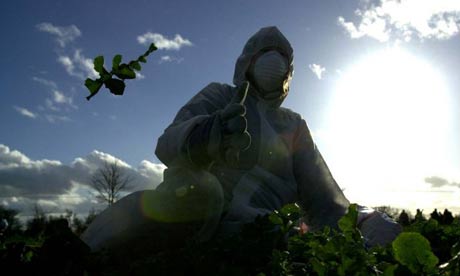 From Popsci.com
From Popsci.comAgriculture is broken. Traditional techniques use too much energy and produce too little food for our growing planet. One fix: skyscrapers filled with robotically tended hydroponic crops and lab-grown meat
By 2025, the world’s population will swell from 6.6 billion to 8 billion people. Climate simulations predict sustained drought for the American Midwest and giant swathes of farmland in Africa and Asia. Is mathematician Thomas Malthus’s 200-year-old prediction, that human growth will one day outpace agriculture, finally coming to pass? Advances in farming technology have kept us fed so far, but the planet’s resources are tapped.
The choice is clear—rethink how we grow food, or starve. Environmental scientist Dickson Despommier of Columbia University and other scientists propose a radical solution: Transplant farms into city skyscrapers. These towers would use soil-free hydroponic farming to slash demand for energy (they’ll be powered by a process that converts sewage into electricity) while producing more food. Farming skyward would also free up farmland for trees, which would help remove carbon dioxide from the atmosphere. Even better, vertical farms would grow food near where it would be eaten, thus cutting not only the cost but the emissions of transportation. If you include emissions from the oil burned to cultivate and ship crops and livestock in addition to, yes, methane from farm-animal flatulence, agriculture churns out nearly 14 percent of the world’s greenhouse-gas emissions.
Read more ....
 Top of the crops: Government ministers are keen to embrace GM foods,like this modified soya crop. Photo from The Daily Mail
Top of the crops: Government ministers are keen to embrace GM foods,like this modified soya crop. Photo from The Daily Mail








